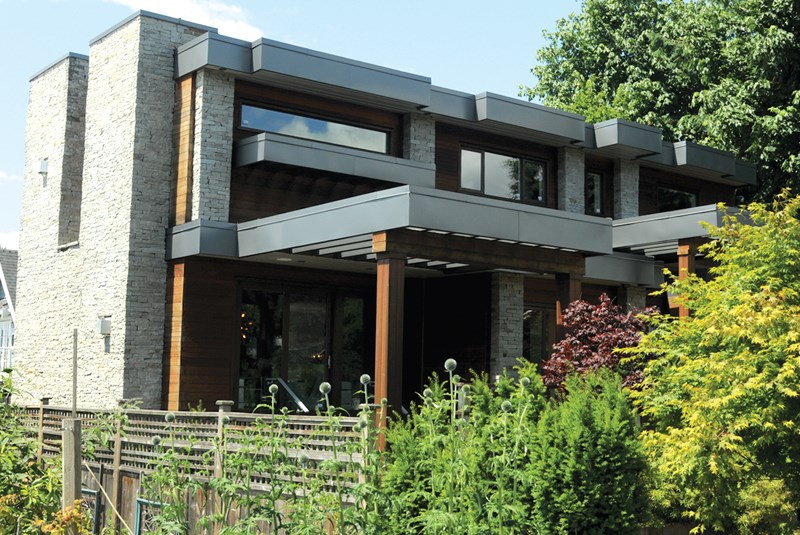After years of walking softly, West Vancouver may swing a big wrecking ball at a mansion on 20th Street.
The home at 733 20th St. was built over the objections of West Vancouver’s bylaws department, who issued a series of stop work orders when the house didn’t conform to agreed-upon plans. The new house appeared occupied despite not being granted an occupancy permit and replaced an abode that was demolished without a demolition permit.
Council voted unanimously to put a notice on title to alert “future gullible purchasers” of the home’s condition, but a few on council advocated drastic measures.
“If we knock down a $5-million house, it might get people’s attention,” suggested Coun. Mary Ann Booth.
Mayor Michael Smith agreed.
“The best option, I think, would be to take the house down,” he said.
The district pays a monetary penalty by allocating staff time to chasing a resident with no sense of civic duty who flouts West Vancouver’s bylaws, Smith said.
“We need to stand up and say: ‘Enough is enough,’” the mayor said. “Maybe public hanging might be a bit severe – although I might not personally have an issue with it – but the bottom line is we have to make sure that people respect our bylaws.”
The saga began four years ago when West Vancouver resident Philip Garrow applied to add an addition and a garage to the one-storey home.
A little more than three months later staff were reviewing his application when they discovered the house was being demolished, prompting the first stop work order.
Staff eventually approved permits for the addition and garage, but those permits did not allow “the removal of the original dwelling from its concrete foundations,” noted a report penned by district manager of permits and inspections Kevin Spooner.
The process was complicated by the home’s setbacks. While district rules require a buffer space of 7.6 metres in the front and 9.1 metres in the back, the house had relatively minimal setbacks of 1.86 metres in the front and 0.2 metres in the back. However, since it was built before that bylaw was passed, the home was essentially grandfathered and considered “legally non-conforming.”
Because of that status, staff specified no work could be done on the home’s structure.
However, approximately one month after the stop work order was issued the house was “almost completely demolished” and the foundations were removed, according to a staff report.
Remnants of the house were left on the boulevard, according to staff.
A second stop work order was issued and removed “by an unknown person.” Two more orders were also taken down.
After the house’s legal status was stripped, the home’s owner, Raven Flello, filed a petition in B.C. Supreme Court but ultimately opted not to pursue the matter in court.
Flello submitted several plans for a new home, each of which depicted a home that tramped on district-mandated setbacks.
Following several rejections, Flello put forward a plan titled The Pretend House.
After a few tweaks, staff issued a building permit on April 10, 2014.
Those plans didn’t include a heated patio but less than one month later staff observed a heated patio that fell short of B.C. Building Code standards.
Approximately five months later Garrow, Flello’s husband, told district staff they planned to apply for a variance.
No application for a variance was made, according to staff.
Once complete, the new house encroached farther beyond district setback limits than the previous house.
Staff also noted a pool full of stagnant, dirty water built without any drainage.
While the pool was eventually drained, at least one neighbour remained dissatisfied with the way that was done.
“At one point he pumped his swimming pool over the fence into our properties, which sort of compounded the problem,” said neighbour Phil Dobson.
Besides the “gong show” of permits, there are also significant groundwater problems, according to Dobson.
“Our sumps have been running flat out, dealing with the water in the area.”
Staff also noted an “electrocution hazard” created by leaking water flowing across an electrical outlet and wiring.
In a final inspection, district staff found electrical problems including cables not properly terminated, lights in shower stalls not waterproofed, no certification for heating installation, missing pressure valves, and what appeared to be green mould or algae in the basement.
The list of deficiencies is not complete, according to staff.
“The new dwelling may have additional latent structural or other deficiencies which cannot be identified without substantial deconstruction of or damage to the new dwelling,” Spooner wrote.
The report is a “litany of horrors,” noted Coun. Craig Cameron.
“The owners have apparently staged the house and are trying to flog it to somebody,” he said.
An online post lists the “modern contemporary home” for $2.598 million.
Due to numerous safety issues, Cameron argued that if the house can’t be brought up to standard, it should be knocked down.
The homeowners did not speak at Monday’s meeting.



